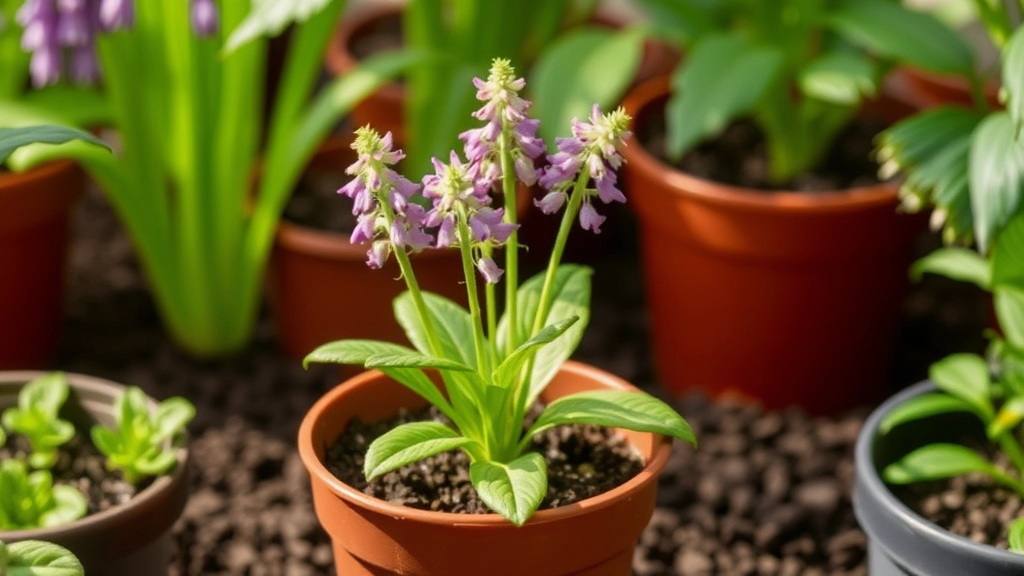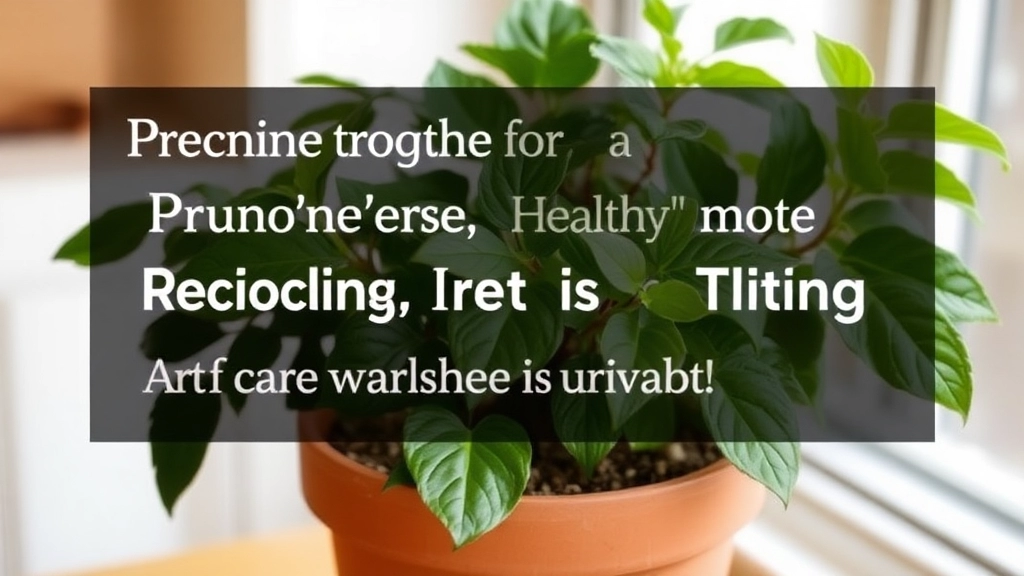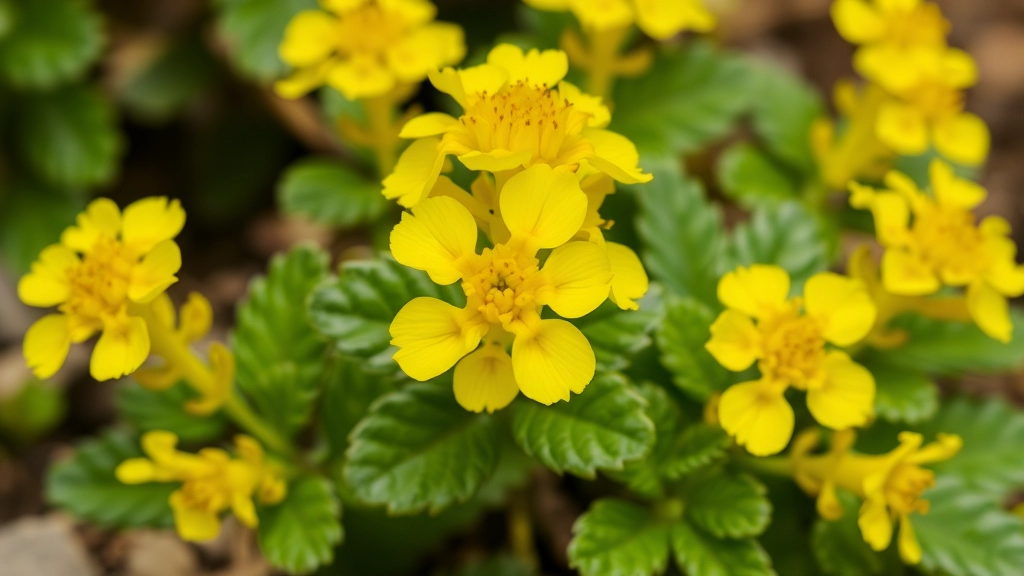Care Guide for Calandiva Yellow Kalanchoe Blossfeldiana
Looking to keep your Calandiva Yellow Kalanchoe Blossfeldiana thriving? You’ve come to the right place. This vibrant, easy-to-care-for plant can brighten up any space with its beautiful yellow blooms. In this guide, I’ll share essential tips on how to grow, water, and care for your Calandiva to ensure it stays healthy and lush.
Best Growing Conditions
First things first, let’s talk about the best growing conditions for your Calandiva Yellow Kalanchoe. These plants love bright, indirect sunlight and well-draining soil. Overwatering is a common issue, so make sure to let the soil dry out between waterings. With the right care, your Calandiva will reward you with stunning flowers and robust growth.
Best Growing Conditions for Calandiva Yellow Kalanchoe
Are you struggling to keep your Calandiva Yellow Kalanchoe thriving? You’re not alone. Many plant enthusiasts face the challenge of providing the right conditions for this stunning succulent.
To ensure optimal growth, consider the following key factors:
Temperature and Humidity
- Ideal Temperature: Calandiva prefers temperatures between 20°C to 25°C during the day and slightly cooler at night. For more detailed information, check out the ideal temperature for Kalanchoe Blossfeldiana growth.
- Humidity Levels: This plant thrives in low to moderate humidity. Avoid overly humid environments, as they can lead to rot.
Location
- Indoor vs. Outdoor: Calandiva can be grown both indoors and outdoors. If indoors, choose a bright room with plenty of natural light. Outdoors, ensure it’s in a spot that receives partial shade during the hottest part of the day. For more insights, visit our Yellow Kalanchoe Blossfeldiana care guide.
- Protection from Elements: If placed outside, protect your plant from strong winds and heavy rains.
Air Circulation
- Good Airflow: Ensure that your Calandiva has good air circulation. This helps prevent fungal diseases and promotes healthy growth.
Essential Watering Techniques for Calandiva Plants

So, you’ve got your Calandiva Yellow Kalanchoe, and now you’re probably wondering how to keep it thriving without drowning it, right?
Watering can be a bit tricky, especially with succulents like Calandiva. Overwatering is one of the most common mistakes, and it can lead to root rot faster than you can say “green thumb.”
Here’s how to nail your watering game:
- Check the Soil: Always feel the top inch of soil. If it’s dry, it’s time for a drink. If it’s still moist, hold off.
- Water Thoroughly: When you do water, give it a good soak. Ensure the water runs out of the drainage holes at the bottom. This encourages deep root growth.
- Frequency: During the growing season (spring and summer), water every 1-2 weeks. In winter, cut back to once a month.
- Use Room Temperature Water: Cold water can shock your plant. Let it sit out for a bit before pouring it on.
- Humidity Matters: Calandiva prefers drier air, so if you live in a humid area, adjust your watering schedule accordingly.
- Signs of Overwatering: Yellow leaves? Mushy stems? These are red flags that you need to ease up on the watering.
Think of watering your Calandiva like a dance; you want to find the right rhythm that keeps your plant happy and healthy.
Light Requirements: How to Ensure Proper Blooming
Are you struggling to get your Calandiva Yellow Kalanchoe to bloom? A common concern among plant enthusiasts is the light conditions needed for these vibrant beauties.
Optimal Light Conditions
Calandiva plants thrive best in bright, indirect sunlight. Here’s how to ensure your plant gets the light it craves:
- Location: Place your Calandiva near a south-facing window for maximum exposure.
- Duration: Aim for about 6 hours of light daily. Too little light can lead to leggy growth, while too much direct sunlight can scorch the leaves.
- Rotation: Rotate your plant every few weeks to promote even growth on all sides.
Signs of Improper Light
Keep an eye on your plant for these indicators:
- Leggy Growth: If your plant is stretching towards the light, it may need more exposure.
- Leaf Discoloration: Yellowing leaves can signal too much direct sunlight, while dark green leaves may indicate insufficient light.
Seasonal Adjustments
Light conditions can change with the seasons. Here’s how to adapt:
Soil Types Ideal for Calandiva Yellow Kalanchoe

When it comes to nurturing your Calandiva Yellow Kalanchoe, the right soil is crucial for its health and blooming potential. You might be wondering, what type of soil will provide the best environment for my plant?
Ideal Soil Characteristics
Calandiva plants thrive in well-draining soil that allows for proper aeration while retaining a bit of moisture. Here are the key components to look for:
- Well-Draining Mix: A cactus or succulent potting mix is often ideal. This prevents water from pooling around the roots, reducing the risk of rot.
- pH Level: Aim for a slightly acidic to neutral pH, ideally between 6.0 and 7.0. This range supports nutrient uptake effectively.
- Organic Matter: Incorporating organic materials like peat moss or compost can improve soil structure and fertility.
Recommended Soil Mix
To create the perfect blend for your Calandiva, consider mixing:
- 50% cactus/succulent potting mix
- 25% perlite or coarse sand for drainage
- 25% organic compost for nutrients
This combination ensures your plant has access to the nutrients it needs while preventing water retention issues.
Container Considerations
Don’t forget about the pot you choose. Ensure it has drainage holes to allow excess water to escape. A terracotta pot can also help wick moisture away from the roots, providing an ideal environment.
Fertilization Tips to Promote Vibrant Growth
Are you wondering how to keep your Calandiva Yellow Kalanchoe thriving? Proper fertilization is key to promoting vibrant growth and ensuring your plant blooms beautifully.
Choosing the Right Fertiliser
Selecting the right fertiliser can make all the difference. Here are some tips:
- Balanced Fertiliser: Use a balanced, water-soluble fertiliser with an NPK ratio of 10-10-10 or similar. This ensures your plant receives equal parts nitrogen, phosphorus, and potassium.
- Dilution: Always dilute the fertiliser to half the recommended strength. Over-fertilising can harm your plant.
- Frequency: Fertilise every 4-6 weeks during the growing season (spring and summer). In autumn and winter, reduce or stop fertilisation as the plant enters dormancy.
Organic Options
If you prefer organic options, consider the following:
- Compost Tea: This is an excellent way to provide nutrients without the risk of chemical buildup. Dilute compost tea with water and apply it during the growing season.
- Fish Emulsion: A great organic choice, fish emulsion provides essential nutrients and promotes healthy growth. Use it sparingly, as it can be potent.
Signs of Nutrient Deficiency
Keep an eye on your plant for signs of nutrient deficiency:
- Yellowing Leaves: This can indicate a lack of nitrogen. For more detailed guidance, check out our Yellow Kalanchoe Blossfeldiana Care Guide.
- Poor Flowering: If your Calandiva isn’t blooming, it might need more phosphorus. Learn more about how to ensure your plant blooms beautifully in our Kalanchoe Blossfeldiana Flowering Period Care Tips.
Pruning and Repotting for a Healthy, Thriving Plant

So, you’ve got your Calandiva Yellow Kalanchoe looking great, but how do you keep it that way? Pruning and repotting are key steps to ensure your plant stays vibrant and healthy.
Why Prune?
Pruning isn’t just about aesthetics; it helps your plant thrive. Here’s why you should consider it:
- Encourages New Growth: Snipping off spent flowers and leggy stems encourages bushier growth.
- Prevents Disease: Removing dead or diseased leaves helps keep your plant healthy.
- Shapes the Plant: Regular pruning gives your Calandiva a lovely, compact shape.
How to Prune Your Calandiva
- Timing: Best done after blooming, usually in late spring.
- Tools: Use clean, sharp scissors or pruning shears.
- Technique:
- Cut back about one-third of the plant.
- Focus on removing any dead or yellowing leaves.
- Trim spent flowers to encourage new blooms.
When to Repot
Repotting is essential for your plant’s health, especially if you notice:
- Roots coming out of the drainage holes.
- The plant looks top-heavy or unstable.
- The soil seems depleted or compacted.
Steps to Repot Your Calandiva
- Choose the Right Pot: Go for a pot that’s one size larger with good drainage.
- Fresh Soil: Use a well-draining potting mix, ideal for succulents.
- Repotting Process:
- Gently remove the plant from its old pot.
- Loosen any tightly bound roots.
- Place it in the new pot and fill with fresh soil.
- Water lightly to settle the soil.
Keeping up with pruning and repotting not only makes your Calandiva look its best but also sets the stage for robust growth.
After ensuring your Calandiva Yellow Kalanchoe is thriving, you might wonder how to expand your collection or share the joy of these vibrant plants. Propagation is an excellent way to do just that. Let’s explore the various methods you can use to propagate your Calandiva.
Cuttings are one of the most common and effective methods for propagating Calandiva. Here’s how to do it:
– **Select a Healthy Stem:** Choose a stem that is healthy and free from pests.
– **Make the Cut:** Use clean, sharp scissors to cut a 4-6 inch segment just below a leaf node.
– **Remove Lower Leaves:** Trim away the lower leaves to prevent rot when planted.
– **Let it Callous:** Allow the cutting to dry for a few hours or overnight. This helps prevent rot.
– **Planting:** Place the cutting in well-draining soil, ensuring the cut end is buried.
– **Water Sparingly:** Mist lightly and place in a bright, indirect light location.
For detailed guidelines on this method, you can refer to [how to propagate Kalanchoe Blossfeldiana cuttings](https://planthq.org/how-to-propagate-kalanchoe-blossfeldiana-cuttings/).
While less common, propagating from seeds can be rewarding. Here’s a straightforward approach:
– **Obtain Seeds:** Purchase seeds from a reputable source or collect them from your existing plants.
– **Prepare the Soil:** Use a seed-starting mix that drains well.
– **Sow Seeds:** Sprinkle seeds on the surface and lightly press them into the soil.
– **Moisture:** Keep the soil moist but not soggy.
– **Light:** Place in a warm area with bright, indirect light.
For more information on growing from seeds, check out [how to grow Kalanchoe Blossfeldiana from seeds](https://planthq.org/how-to-grow-kalanchoe-blossfeldiana-from-seeds/).
Offsets, or âpups,â are small plants that grow from the base of the parent plant. Here’s how to propagate using offsets:
– **Identify Offsets:** Look for small plants at the base of the main plant.
– **Carefully Remove:** Gently twist or cut the offset away from the parent plant.
– **Let it Dry:** Allow the offset to dry for a few hours to form a callous.
– **Plant:** Place the offset in well-draining soil and water lightly.
By using these propagation methods, you can easily multiply your Calandiva plants and enjoy their beauty in various spaces.
Common Pests and Diseases: Prevention and Solutions for Calandiva Yellow Kalanchoe

So, you’ve got your Calandiva Yellow Kalanchoe thriving, but what happens when those pesky pests or diseases come knocking?
Worries You Might Face:
- Are those little bugs ruining my plant?
- Why are the leaves turning yellow?
- How can I keep my plant healthy and pest-free?
Let’s dive into the common culprits and how to tackle them.
Common Pests
- Aphids
- These tiny, green bugs love to suck the sap from your plant.
- Prevention: Regularly inspect your plant. A strong spray of water can dislodge them.
- Solution: Use insecticidal soap or neem oil if they invade.
- Mealybugs
- They look like little cotton balls and can cause significant damage.
- Prevention: Keep your plant clean. Wipe the leaves with a damp cloth.
- Solution: Dab them with rubbing alcohol on a cotton swab.
- Spider Mites
- These microscopic pests can cause webbing and yellow spots.
- Prevention: Increase humidity around your plant.
- Solution: A good shower can help, but if they persist, neem oil is your friend.
Common Diseases
- Root Rot
- This often happens if you overwater your plant.
- Prevention: Ensure your pot has drainage holes and let the soil dry out between waterings.
- Solution: If you notice symptoms, repot in fresh, dry soil.
- Powdery Mildew
- A white, powdery substance on leaves indicates this fungal issue.
- Prevention: Avoid overcrowding and ensure good air circulation.
- Solution: A mixture of water and baking soda can help treat it.
Quick Tips for Prevention
- Regular Checks: Make it a habit to inspect your plant weekly.
- Cleanliness Counts: Dust off those leaves to keep pests at bay.
- Healthy Soil: Use well-draining soil to prevent root issues.
Seasonal Care Tips for Indoor and Outdoor Growth
Are you wondering how to keep your Calandiva Yellow Kalanchoe thriving throughout the seasons? Seasonal care can make a significant difference in the health and vibrancy of your plant.
Indoor Growth Tips
- Winter Care:
- Reduce watering as the plant enters dormancy.
- Keep it in a cooler room (around 15-18°C) to encourage blooming. For more details, refer to our Yellow Kalanchoe Blossfeldiana Care Guide.
- Spring Awakening:
- Gradually increase watering as temperatures rise.
- Begin fertilising every four weeks to promote new growth.
- Summer Sunshine:
- Ensure the plant gets plenty of light, but avoid direct midday sun.
- Increase humidity with a pebble tray or misting.
- Autumn Preparation:
- Start reducing fertilisation as growth slows.
- Monitor for pests as indoor heating can create a dry environment. Learn more about this in our Leaf Care Tips and Troubleshooting guide.
Outdoor Growth Tips
- Spring Planting:
- Transplant outdoors after the last frost.
- Choose a well-draining spot with plenty of sunlight.
- Summer Care:
- Water regularly but avoid waterlogging.
- Provide shade during extreme heat.
- Autumn Transition:
- Bring potted plants indoors before the first frost.
- Trim any dead leaves to prepare for dormancy.
- Winter Protection:
- If planted outdoors, cover the base with mulch to protect roots.
- Avoid watering during frost to prevent root rot.
FAQs on Calandiva Yellow Kalanchoe
How often should I water my Calandiva Yellow Kalanchoe?
During the growing season (spring and summer), water every 1-2 weeks. In winter, reduce watering to once a month. Always check the top inch of soil; if it’s dry, it’s time to water.
What type of soil is best for Calandiva Yellow Kalanchoe?
A well-draining mix is ideal. Use a combination of 50% cactus/succulent potting mix, 25% perlite or coarse sand for drainage, and 25% organic compost for nutrients. Aim for a slightly acidic to neutral pH (6.0-7.0).
How can I prevent overwatering my Calandiva?
Ensure the soil dries out between waterings. Use a pot with drainage holes and avoid letting water pool at the bottom. Signs of overwatering include yellow leaves and mushy stems.
When and how should I prune my Calandiva Yellow Kalanchoe?
Prune after blooming, usually in late spring. Use clean, sharp scissors or pruning shears to cut back about one-third of the plant, focusing on removing dead or yellowing leaves and spent flowers.
When is the best time to repot my Calandiva?
Repot your plant if you notice roots coming out of the drainage holes, the plant looks top-heavy, or the soil seems depleted or compacted. Choose a pot one size larger with good drainage and use fresh, well-draining soil.
What are common pests that affect Calandiva Yellow Kalanchoe, and how can I treat them?
Common pests include aphids, mealybugs, and spider mites. Regularly inspect your plant and use insecticidal soap, neem oil, or rubbing alcohol to treat infestations. Increase humidity to prevent spider mites.
How can I prevent and treat root rot in my Calandiva?
Prevent root rot by ensuring your pot has drainage holes and allowing the soil to dry out between waterings. If you notice symptoms, repot the plant in fresh, dry soil.
What should I do if my Calandiva has powdery mildew?
Prevent powdery mildew by avoiding overcrowding and ensuring good air circulation. Treat it with a mixture of water and baking soda.
What are some quick tips for keeping my Calandiva Yellow Kalanchoe healthy?
Inspect your plant weekly, keep the leaves clean, and use well-draining soil. Regular checks and cleanliness can help prevent pests and diseases.
References
-
How to Grow Calandiva Indoors
-
Calandiva Care: Learn How To Grow Calandiva Plants
-
Calandiva Plant Care Guide
